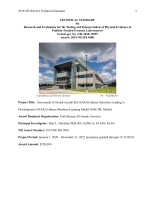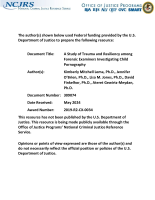Meeting Complex Needs of Sexually Assaulted Incarcerated Individuals: Impact of Expert Sexual Assault Nurse Examiner Care via Telehealth
NCJ Number
309218
Journal
Journal of Correctional Health Care
Date Published
February 2024
Agencies
OVC-Sponsored
Publication Link






